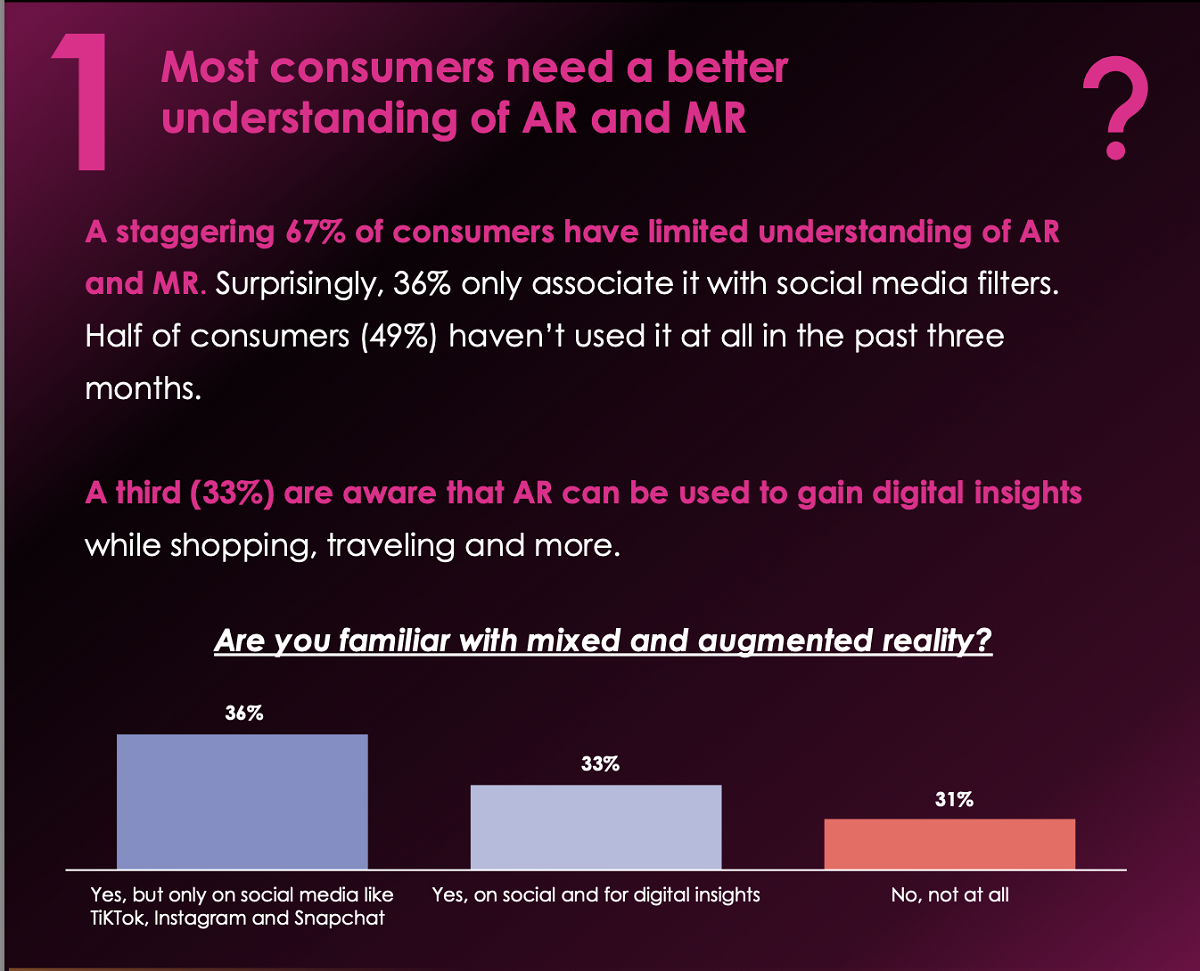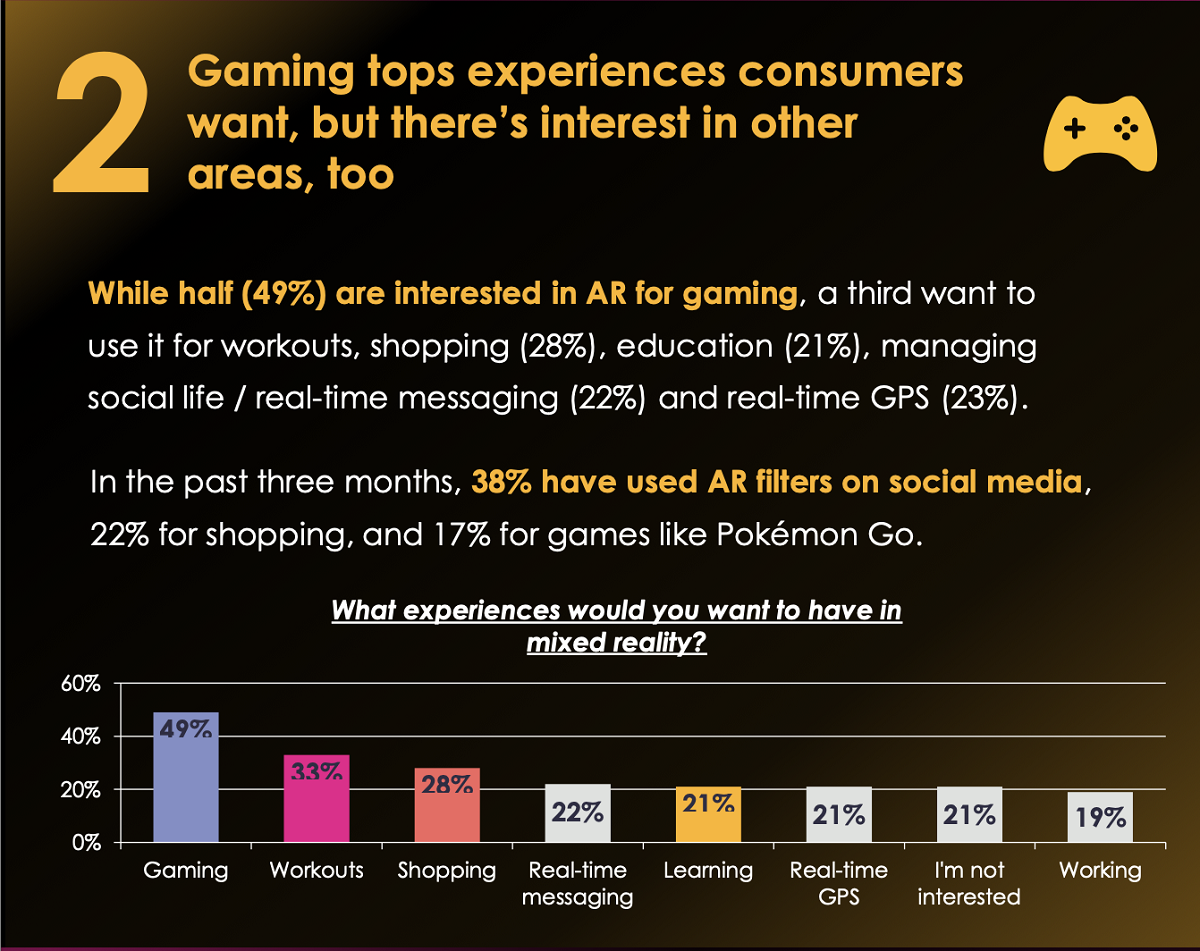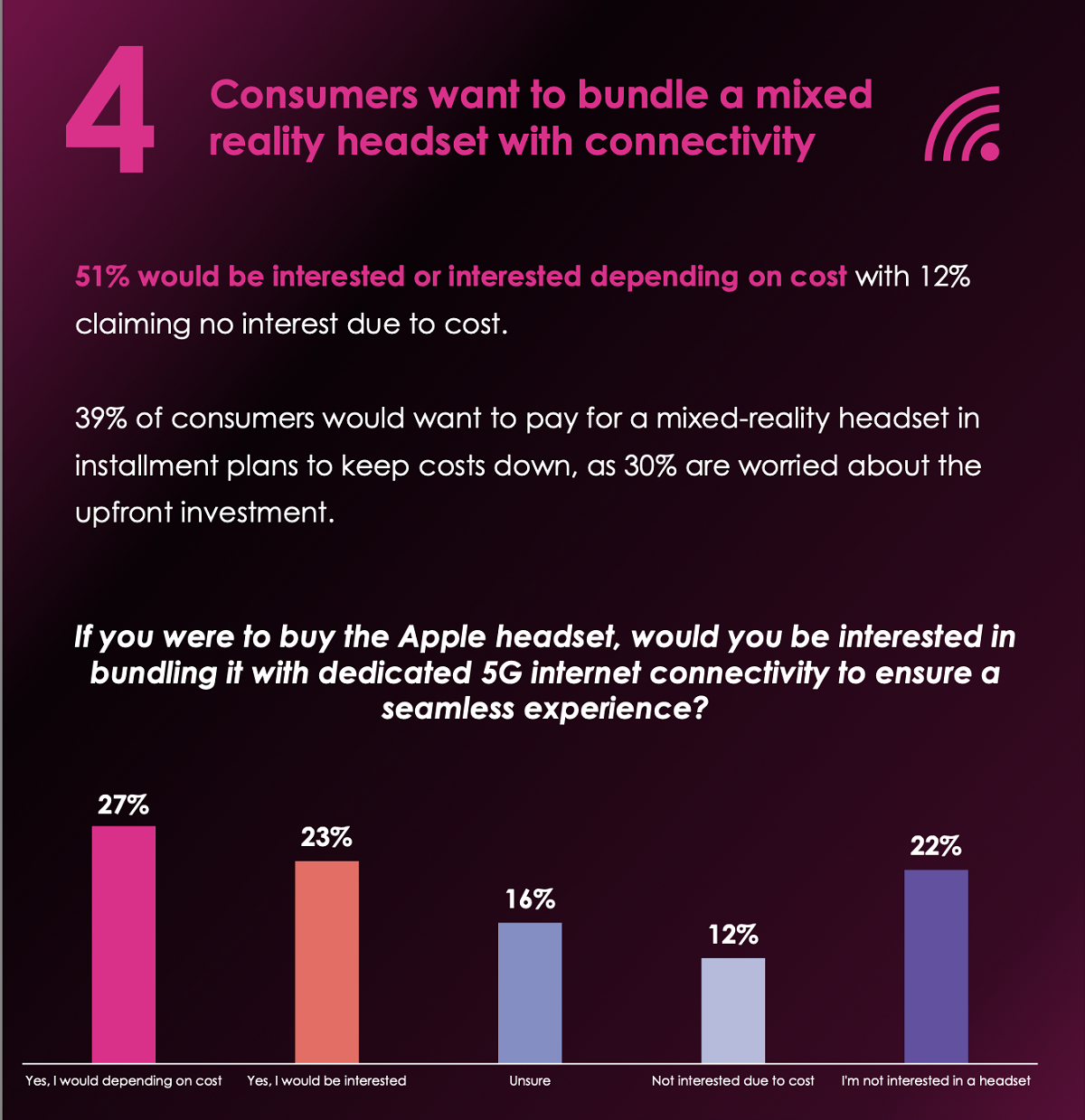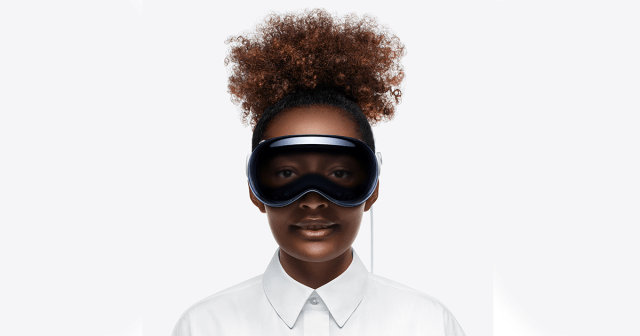
TL;DR
- Amdocs’ “The Era of Mixed Reality Report” offers insights into user behaviors shaping spatial computing technology.
- Consumers trust Apple when it comes to mixed reality. More than half of consumers feeling an association with Apple would make them more interested in an AR/MR headset.
- Nearly 70% of consumers have limited understanding of AR and MR, and nearly a third don’t have a clue what it is.
READ MORE: Spatial computing: Are consumers ready for mixed reality? (Amdocs)
New research by Amdocs reveals that consumers are eager for more advanced augmented reality (AR) and mixed reality (MR) experiences, particularly if Apple is involved.
“The Era of Mixed Reality” report from Amdocs found that users are looking for these immersive technologies to enjoy gaming experiences first and foremost, with shopping and exercise not far behind. However, there is also a significant knowledge gap when it comes to AR and MR.

“Just like the iPhone turned the internet into mobile, mixed reality will disrupt how we interact with our surroundings and immerse ourselves in new experiences,” said Gil Rosen, CMO of Amdocs.
“But first, we’ll need to ensure networks, connected devices and the content that runs on top work together seamlessly. With immersive experiences, there is zero tolerance for lag or quality degradation, and to make it amazing, the entire ecosystem needs to evolve as one.”
A staggering 67% of consumers have limited understanding of AR and MR. Half of consumers (49%) haven’t used it at all in the past three months. While a third (33%) are aware that AR can be used to gain digital insights while shopping or traveling, nearly a third of consumers haven’t a clue what AR or MR is.

Those that do are keen to use Apple product or associate Apple with AR/MR experiences, Amdocs reports. More than half (52%) of consumers felt an association with Apple on AR and MR would make them more interested in it, with 38% saying they would be likely to buy an Apple product.
Sixty percent of consumers, according to this report, would prefer to use a mixed reality approach in favor of a full VR metaverse (40%). More than half of users would be interested in trying the new technology, depending on how much it cost.

Anthony Goonetilleke, group president of technology and head of strategy at Amdocs, added, “These findings uncover several essential factors, first and foremost being the need for better education around what’s possible from AR and MR experiences, as well as preparing networks that can better support in-demand, intensive and seamless experiences. As AR and MR experiences become more widespread, we’ll see the rise of new-found ‘experience bundles’ that capitalize on specific personas, coupling connectivity with entertainment, education, enterprise and more.”



